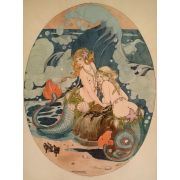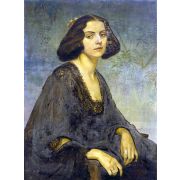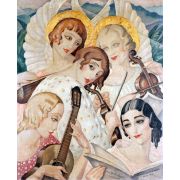
Art Deco
Art Deco
1 to 1 out of 1artist
Gerda Wegener
1886 -1940, Danish, Female Artist / Art Deco and Art Nouveau, 61 works
1 to 1 out of 1artist
Art Deco could be seen in all kinds of visual arts, from architecture and painting to sculpture and graphic design. Art Deco artists often paid homage to modernist movements like Cubism, De Stijl, and Futurism, but they did so in a roundabout way. It was as if they were taking the results of a few decades of simplifying compositions to their most basic forms and making a new style that was pleasing to the eye but not intellectually threatening.
Art Deco got its name from the 1925 International Exhibition of Modern Decorative and Industrial Arts held in Paris. Art Deco can be seen as both a response to Art Nouveau and a replacement for it. It was a popular style for furniture, pottery, textiles, jewelry, glass, and other things. It was also a popular style for building cinemas and hotels. Art Deco, like Art Nouveau, tries to add artistic touches to valuable items.
The main thing that makes Art Deco different from Art Nouveau is that Cubism influenced it. This gives Art Deco designs a more fragmented, geometric look. Some Art Deco designs, like those by the British artist Clarice Cliff, kept images based on plant shapes and curves. Art Deco was influenced by a wide range of things, including ancient Egyptian, Aztec, and other Central American art, as well as the way modern ships, trains, and cars were made. It was also influenced by the contemporary architecture and design of the Bauhaus and architects like Mies van der Rohe and Le Corbusier.
As mass production became more common, artists and designers wanted to improve the look of mass-produced functional objects like clocks, ashtrays, cars, and buildings. Art Deco's focus on beauty in all parts of life directly resulted from how new and widely used machine-age technology was compared to traditional methods of making things by hand. The Bauhaus school was also interested in industrial production. Still, it was the exact opposite in some ways because it didn't add artistic touches and instead used clean, simple geometric shapes.



